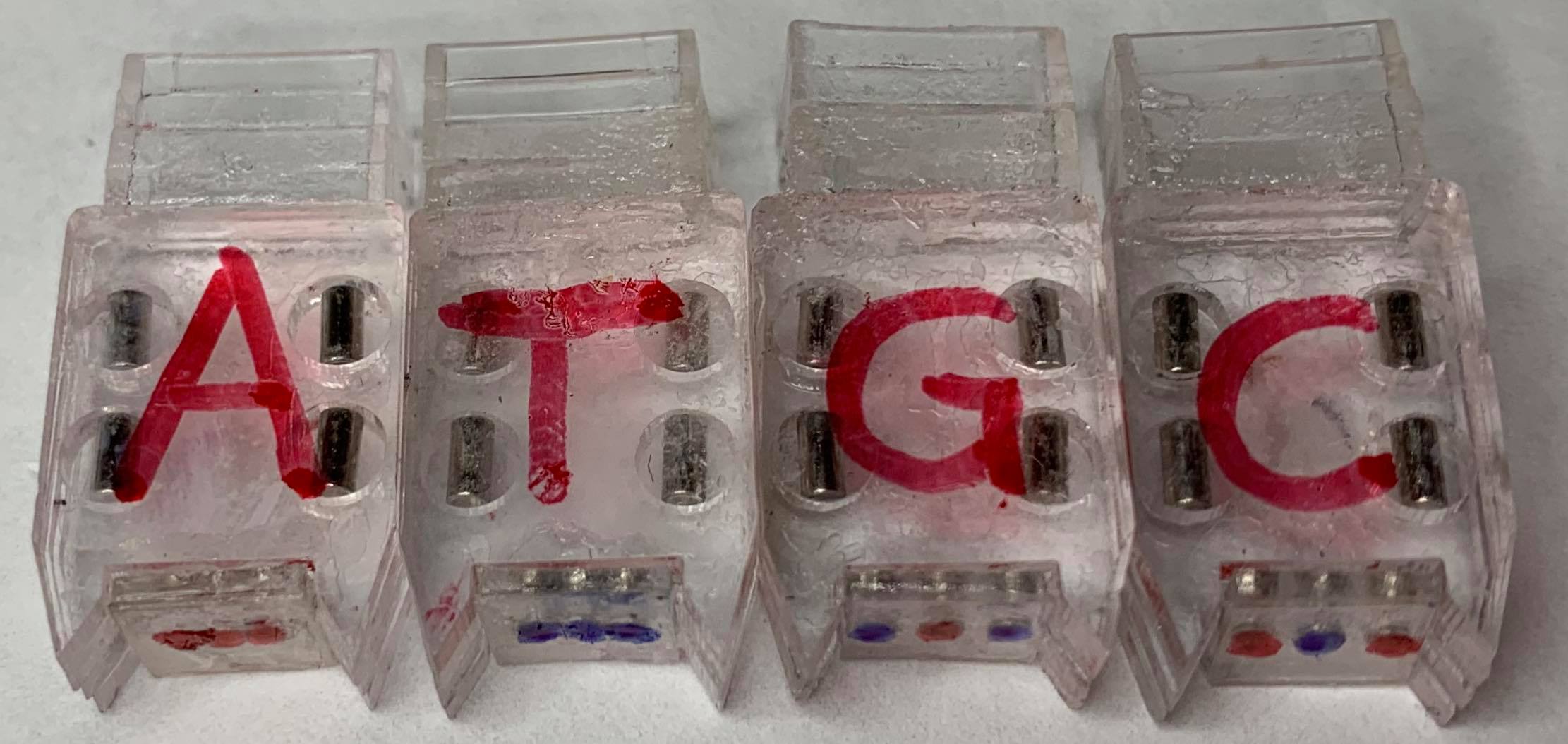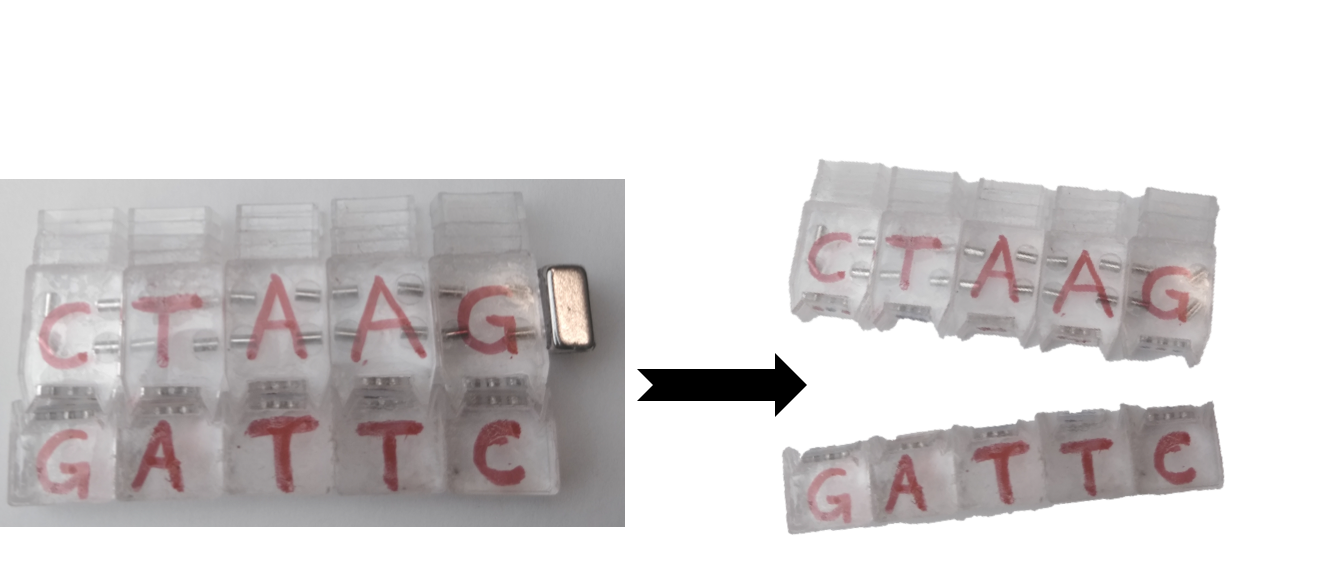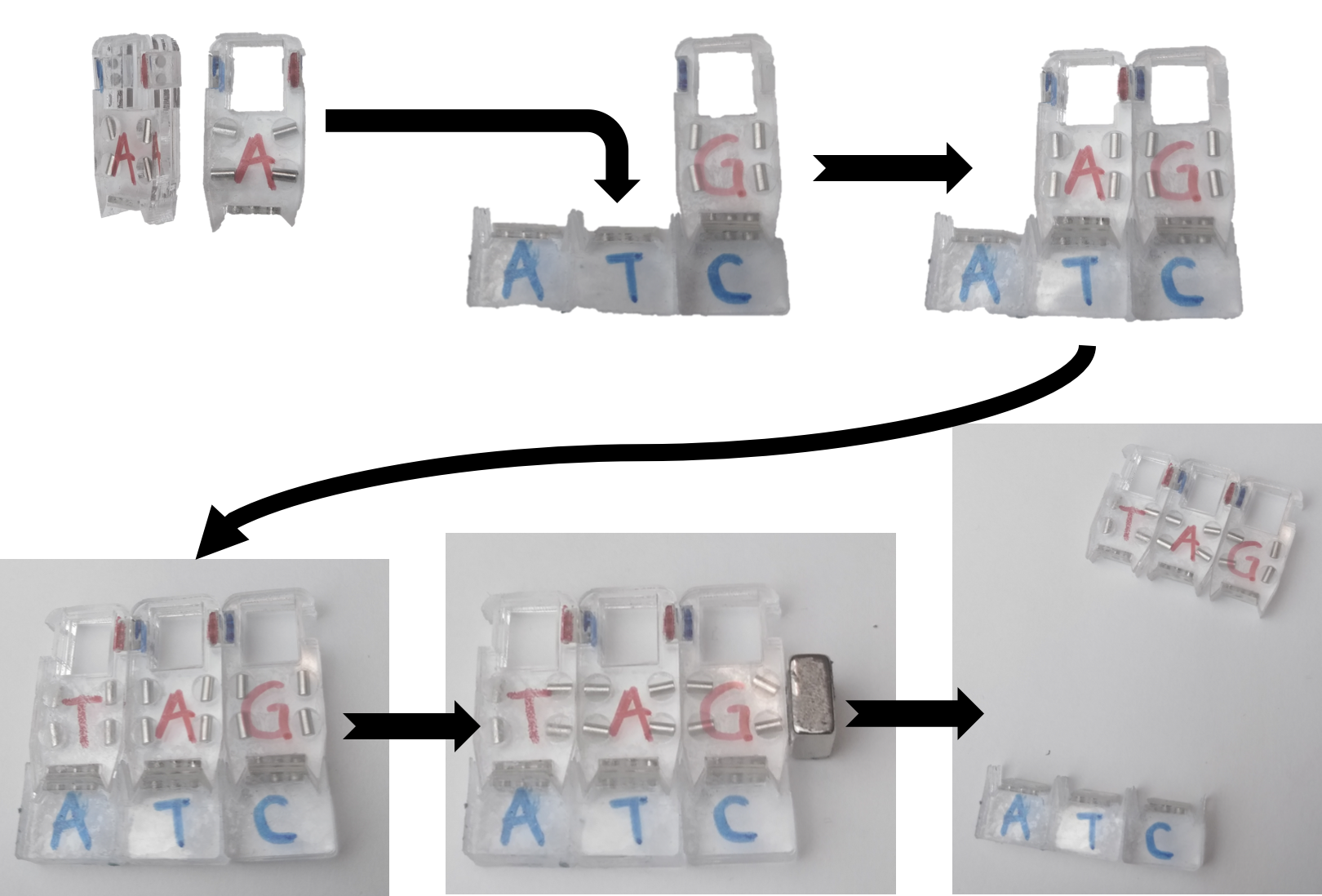Macroscale Modeling
Preliminary Designs
Parts of the replication work cycle process have already been modeled with cm-scale prototypes. To test our design strategies, we rapidly prototype macro-scale analogues of the panels using a laser cutter. Rare earth magnets are embedded in the panels to create our macro-scale analogue bases, as shown below.

Shown above are macroscale models of the A,T,G,C base pairs. Each of the bases has a unique dipole pattern, as indicated by the blue and red dots on the underside of the panels. Like biological DNA, these patterns were chosen in a way such that A preferentially bonds with T, and G to C.
To model the diamond backbone, we have laser cut four circular disks in the plane of the panel in which magnets can freely rotate. Magnets in these disk-slots start out in a meta-stable configuration parallel to the panel sides so that when another panel is nearby they do not react.
To demonstrate functionality, we start with a mother strand, GATTC:

This strand is placed into an environment with free-floating magnetic panels, or “Magnetic DNA base pairs”. One by one, the base pairs find their matching site and attach.

After the strand is fully assembled, a magnetic field is applied to the side of the chain, reorienting all the dipoles in the backbone. This newly formed DNA strand can now separate from the mother strand, and act as the mother strand for another assembly.

To allow for sequential replication (equivalent to the 5-end to 3-end formation on a new DNA strand), similar panels with side magnets have also been manufactured. In this design, the side magnets were glued above the backbone magnets, as indicated by the red circle:

Like the other prototype, this design also undergoes a similar work cycle:
